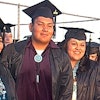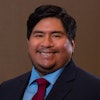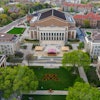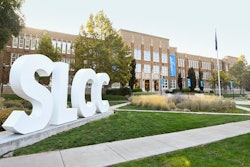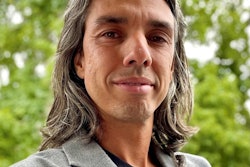Astalemate continues to persist over the remains of 12,000 Native Americans stored in a University of California, Berkeley museum.
A coalition of tribes has been demanding that Native Americans be given more control over the ongoing repatriation process of those remains. UC Berkeley officials, however, have refused to allow what they say would amount to external supervision of a university entity. Since Berkeley archaeologists excavated them in the 1960s, the bones have been stored in drawers and cabinets beneath a pool as part of the Phoebe A. Hearst Museum of Anthropology. In addition to this collection of human remains, which is one of the largest in the nation, the museum also has 400,000 Native American artifacts.
Berkeley has been required — since the passage of the Native American Graves Protection and Repatriation Act (NAGPRA) in 1990 — to return, if requested, the remains of federally recognized tribes. But since university officials are not required to give Native American groups any control over that process, they say that they have been doing the “right” thing in following the law.
“We do follow NAGPRA regulations, and we have repatriated what are known as burials and we have some pending now,” says Marie Felde, director of media relations at the university. The museum has repatriated more than 250 individuals already. “We encourage the Native American tribal representatives to come to the museum to begin the process of making a claim for repatriation.”
But the Native American NAGPRA Coalition (NANC), a group of eight federally recognized tribes, wants Native Americans to have power over that process. That power lies in being able to determine what remains are deemed “culturally affiliated,” and can be returned, or “culturally unidentifiable” and cannot be returned.
If a tribe requests a set of bones that is currently categorized as culturally unidentifiable, then it must pass through two UC NAGPRA Repatriation Committees, one at Berkeley and one at the system-wide level at the University Office of the President, and be re-categorized as culturally affiliated before the set can be returned. Currently, about 80 percent of the remains are classified as culturally unidentifiable. “Tribal members have complained that these committees are set against them as they are made up of mainly scientists and only a few Native Americans that are selected by the university,” says Dr. Larri Fredericks, a Native American anthropologist who helped form the coalition. “They [the tribes] want all evidence including oral history and oral traditions to be considered equally with archaeology in deciding the preponderance of the evidence.”
The coalition has demanded three things from the university, none of which the university has moved on. It is asking for Native American tribes to be represented on the hiring committee for the new Repatriation Coordinator and other NAGPRA positions. It is asking for the UC Berkeley NAGPRA Repatriation Committee to be opened up to include at least two American Indian tribal representatives picked by the tribes themselves. And it wants the NAGPRA entity that handles the repatriation process to operate outside the administrative control of the museum and the vice chancellor of research and be moved under the discretion of Berkeley’s Boalt Hall School of Law.
“There are three interested parties in the collection of Native American human remains at the university: the museum, researchers and Native Americans,” says Fredericks. The directors of the museum have met with more than 30 tribes in four regional meetings in California since last summer to discuss what Berkeley can do to assist them in their repatriation efforts.
The directors listened to “what needs they have and what difficulties they have had, if they’ve had any, in working with the Hearst Museum,” Felde says.
However, the coalition has said those meetings were just designed to cool off several Native American groups that have been smarting over the decision, made last summer without their input, to fold the museum’s NAGPRA unit into the structure of the museum. The NAGPRA unit carried out the repatriation process. Fredericks, who had been interim NAGPRA coordinator of the unit for more than a year, was consequently removed from her post.
“Many tribes were upset by the reorganization as some of us had been in NAGPRA since 1999 and they had gotten to know and trust us,” says Fredericks, a member of the Athabascan tribe from Alaska. “They were also upset that they were not given representation on the reorganization and were closed out of the process.
” Soon after, the tribes formed NANC. The coalition managed to sway California state Sen. Darrell Steinberg, D-Sacramento, to launch a Senate investigation in February into the reorganization and the lack of consultation with the tribes, Fredericks says.
The National Congress of American Indians and the Inter-Tribal Council of Wisconsin have also supported the coalition’s demands. To date, the university seems determined not to back down any time soon.
Says Felde: “The goal really is to make sure that the repatriation occurs, but that it is done in a way to ensure that the collections go back to the proper tribe, and one of the main roles of the federal regulations is to ensure that that happens. We will follow the federal law in that regard.”
–IBRAM ROGERS
Click here to post and read comments
© Copyright 2005 by DiverseEducation.com

